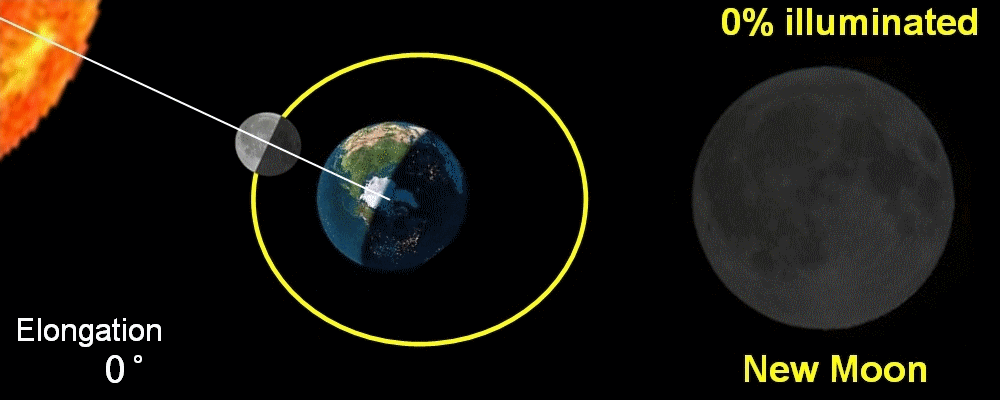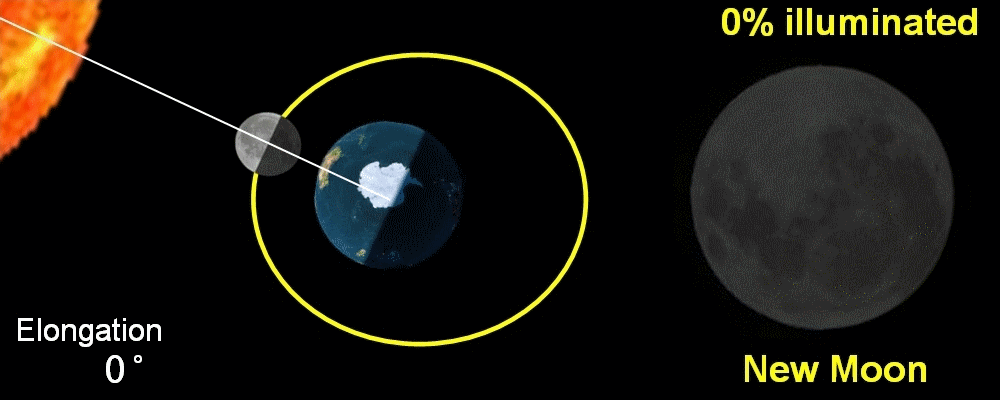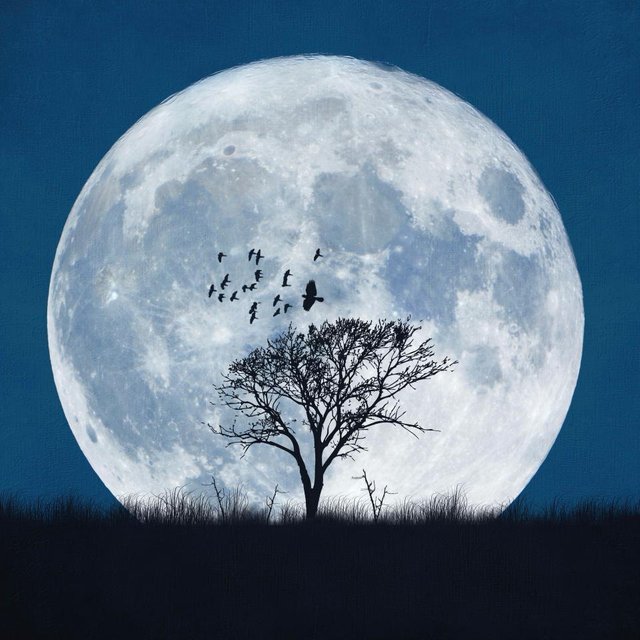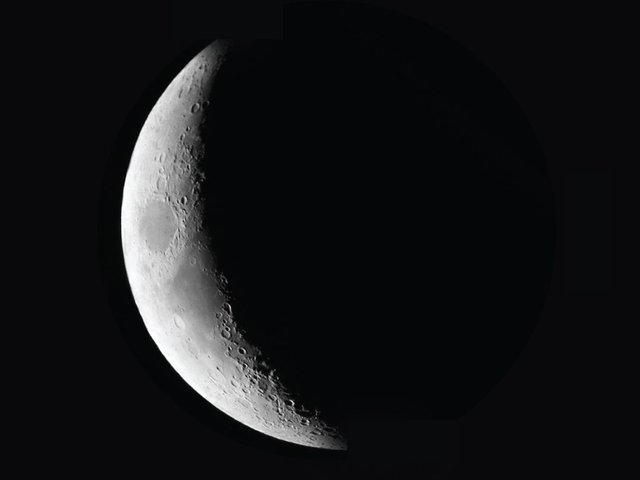Wonders in our sky --- The phases of the moon! and some cheese talk!

Hey guys, good to be here again. So this is the second time I tried putting together an article on the moon. With all that hype on the media last week about the blue supermoon etc-etc, I suppose since this is coming today, I'm way too late for the party.
What about the first one? Well, turns out it got corrupted somewhere in the folder I'd saved it in. So I had to start all over. My friends @greenrun and @trumpman suggested I did something different using hackmd, but I've decided to stick with this article and to see its completion. Here's how it turned out to be.
Cheese talk first!
So I'm trying to imagine you as a kid at night back then. you stared up into the sky and saw this circle-circle shiny stuff up there. You marveled, and asked your parents or guardian what it was. That night, you got to know two childhood truths:
First was that it is called "Moon", and secondly, "it was made of cheese!" Right? hahaha...
But of course, it is made of cheese. and if ever you're beginning to wonder if this fact were possibly correct, you probably shouldn't be reading this, because, before the end of primary school, everyone finally got to know that the moon ISN'T made of cheese... So, no cheddar here.
If you've paid even the most cursory attention to our moon at any time, you'd have noticed that it doesn't remain at a place for too long. it changes its position over time. You also might have noticed its form. Today, it's suddenly brighter and fuller than it was last week.
So what is it about the moon that keeps us interested in it? Join me as I explore our cheese, sorry, moon and it's different phases!.

Let's describe the Moon for a start!
The moon is errr...
Besides the sun the moon is the most obvious thing in our sky. it is bright, silvery and probably too cool for a ball of cheese, and has been the target of imagination, poetry, science and even our rockets!
it's a common misconception that the moon is only up at night in our sky.. that really isn't the case. the moon is pretty much up for most of the day, however, if you were the one standing close to the brightest star in our solar system, you'd probably get the idea. –You don't stand a chance!
The moon is a giant ball of rock spanning about 3500 km across diameter hanging in space. It is our Earth's natural satellite.
Looking at the moon on some evenings, it looks like a bright and smooth marble, but in truth, the reverse is the case. the moon isn't as smooth as we would think it is. Most of its surface is made up of rocks and craters as big as a baseball stadium. All proofs of a possible collision that occurred millions of years ago. Hence, it's surface is pretty dark, and it's reflect-ability could be likened to the reflect-ability of a chalkboard or the asphalt.
Okay, so we know it's not smooth, that explains very little as to why it's bright at night... is the moon self-luminant?
Nope, it isn't! in fact, left alone on its own, the moon hasn't any light at all. Its brightness is a reflection of the Sun's rays on that part of the moon that is facing the sun.

It's a satellite!
Because the moon is a sphere, and it's orbiting our Earth in space, it's got daylight (bright side), and night time (dark side). Hence it's based on its geometry as a sphere. just like every other spherical object in space would experiences night and day from a single source of light -The Sun.-
The revolution of the moon around the earth takes approximately 29 and a half days. which is roughly a month.
The way the moon appears to us from the earth actually depends on our respective positions with respect to the Sun. what do I mean?
When facing the moon with the earth behind you, then you're facing the daylight of the moon and you see all of the Sun's rays reflected off the moon.. it appears full.
If you're off to the side of the moon, and the sun is just in front of the two of you, then you're viewing the lit side of the moon, and the unlit side of the moon and well. so it appears half with just the lit side visible...
If the moon is in between you and the sun, then daylight is on the other side. Hence, you're facing night time and you don't get to see any ray reflected off the moon.
Now, there a fancy term for all of this (how we see the moon) we call it the phases of the moon, and we have 8 phases of the moon, with four being primary Stick around for an in-depth view of each of them.

Phases of the moon.
"Phase" is an angle of the moon to the earth. hence as earlier stated, it is how much of the moon that appears to us. It also refers to how much of the moon we can see, and the angle we're seeing it from.

If simulated in the clockwise direction, the phases stay the same.

The phases happen as the moon continually move in circles around the earth,
the stages are written below as:
- New moon
- Waxing crescent
- First quarter
- Waxing Gibbous
- Full moon
- Waning Gibbous
- Third quarter
- Waning crescent
- Dark moon.
Also, it goes without saying, that the dark moon and the new moon are pretty much the same phases.

New moon:
The new moon is the first of the primary stages. it occurs when the moon and the earth align with the Sun, and the moon is in between them of course. hence, we're facing the unlit side of the moon and we see nothing. The new moon is also called the dark moon! since they're the same phase.

Waxing Crescent Moon.
The one is called "waxing" to denote growth... in this phase, what we see is a small lit banana-shaped area called a crescent, with the terminator forming an arc close to the edge on one side. the moon had continued its revolution around the Earth and has shifted a bit in just about three to four days. hence it's no longer aligned with the earth and the sun, so we get to see just a small part of it. from this point, the unlit part of the moon is faintly visible because the earth's atmosphere reflects a little bit of sunlight on it. This is a terminology we call **Earthshine!**

First quarter
So now it's about seven (7) days after the new moon, the moon had traveled at an approximate angle of 90° around the earth. Since that's ¼ of a full circle, we call it the first quarter. Here, the moon stays side by side with the earth, so what we see is the terminator at the middle of the moon, while half of the unlit part and half of the lit part.

Waxing gibbous moon:
The moon doesn't stop for anyone. so it resumes its extraterrestrial travel around the Earth. The term 'gibbous' is used to describe its shape, –which of course is slightly larger than a semicircle but not up to a full circle... more areas of the moon up exposed.

Full moon
At about 14days, when the moon has completed exactly 180° of its orbit around the earth, we see a full moon because it's now on the opposite side of the earth. hence with the sun behind us, we see the full moon in front of us.
PS: Occasionally, with the moon on this side of the earth now, the earth would cover the completely from receiving and sunlight, and it doesn't glow at night even though we're on this time of the month. this is called a lunar eclipse. If the moon were inhabited, Moon dwellers would see the earth as a big shadow.

Waning gibbous moon.
After the bright full moon, (as the apex, ), we have the next phase at approximately three to four days after it. we call it this waning gibbous moon. it's called "waning" gibbous because the moon is decreasing in size this time and in the opposite direction of the first. Gibbous because it still hasn't reduced up to a half of the moon. what we see is a shrinking illumination as shown in the image here.
With some exceptions, the waning gibbous moon rises after sunset and doesn't set until a few hour after sunrise.

Third quarter.
The moon travels 270° around the earth and gets to the third quarter at approximately 3 weeks. and once again, it's side-by-side with the Earth, and we see 50% of the lit side and 50% of the unlit side with the terminator at the center... Hello, half-moon once again.
Waning crescent moon!
Here, the moon is a lot closer to the sun now than the previous third quarter. this time its a crescent again, and a waning one at that. It rises with the sun with just about 49.9% to 0.1% illumination. and clearly, we're going back to where we started, (The dark moon), to continue the revolution again!.
Most time, the waning crescent moon rises after midnight and pretty much stays up and visible in the morning, and then it sets in the afternoon, but we cannot see all of that. At 360°, the moon aligns with the earth and moon again to continue the new moon phase.
Well, there we have it guys, not only do we know that the moon isn't made of cheese, we also know it's simply rocks and soil. and now we don't have to stare and wonder why the moon is brighter and fuller than it was yesterday.
Thank you for reading,
Yours,
@pangoli









Being A SteemStem Member
I enjoyed so much reading your article! Well done!
It is wery well written, it looks like we are playing the game of the moon. It is a pleasure when a scientific subject is explained this way, I look forward to reading you again!
Hello you may like some of my posts. I am an astrophysicist and have experience in science communcation, so I like to explain cool complicated things about science so other can understand.
Here is an article about the motion of the solar system for example:
https://steemit.com/life/@physics.benjamin/sep2l-how-does-the-solar-system-move-the-truth-about-our-orbits
Sure! I am reading it now! Thanks and keep it up!
Thank you, dear...
Something strangely satisfying about looking at the moon. I wonder if it's hardwired inside us, from all those star-gazing ancestors of ours.
Also, you've demystified the moon and its relation to cheese, but what about werewolves?
You used for waning and waxing gibbous moon the same image, this is a bit misleading.
:)
Nah, I pretty much used different images... look closely, the reflections aren't the same...
Good to know you read through... :)
Very succesful and informative article.. as a person who is interested with Astrology, I want to say the moon could be simply rocks and soil but all the movements of moon is effecting our world and humanity. Especially new moon and full moon is closinf a chapter in our lifes and open another one if you notice it. Here is I wrote down some information about lunar eclipse from Astrology side if you like to read.. https://steemit.com/astrology/@ellaironheart/the-first-lunar-eclipse-of-2018-on-january-31-we-will-have-a-lunar-eclipse-in-the-star-sign-leo-how-we-will-be-effected
It's always amazing to see what's in space and how they work. Good job here.
Green! :)
Nice article thanks.
There is something that maybe you should have mentioned here. The fact the same side of the moon always faces us, due to it being "tidally locked" with the Earth.
Another way to think of this is that the moon spins on its axis at the same rate that it makes a complete orbit of the earth. So the two motions "cancel" each other and results in the same face of the moon always facing Earth.
I thought i'd add this because it's an important aspect involving the phases of the moon.
I hope that contributed.
Thanks a lot... I kinda left that out so that in the subsequent article, I could talk about the moon's tidal effect on our ocean.
good contribution bro. followed
Also maybe you'd like to read about the motion of the solar system:
https://steemit.com/life/@physics.benjamin/sep2l-how-does-the-solar-system-move-the-truth-about-our-orbits
And there I thought, the moon would be the biggest amount of available cheese in space. What a disappointment! :(
Sigh. Life's not fair. Nice work, though ;)
Hahaha!! Hello reality. For me at first, it was sad to come to terms with...
thanks for the mention. Great post, nice to see your writing improving :D
Thanks a lot bro, i do hope to be better... :)